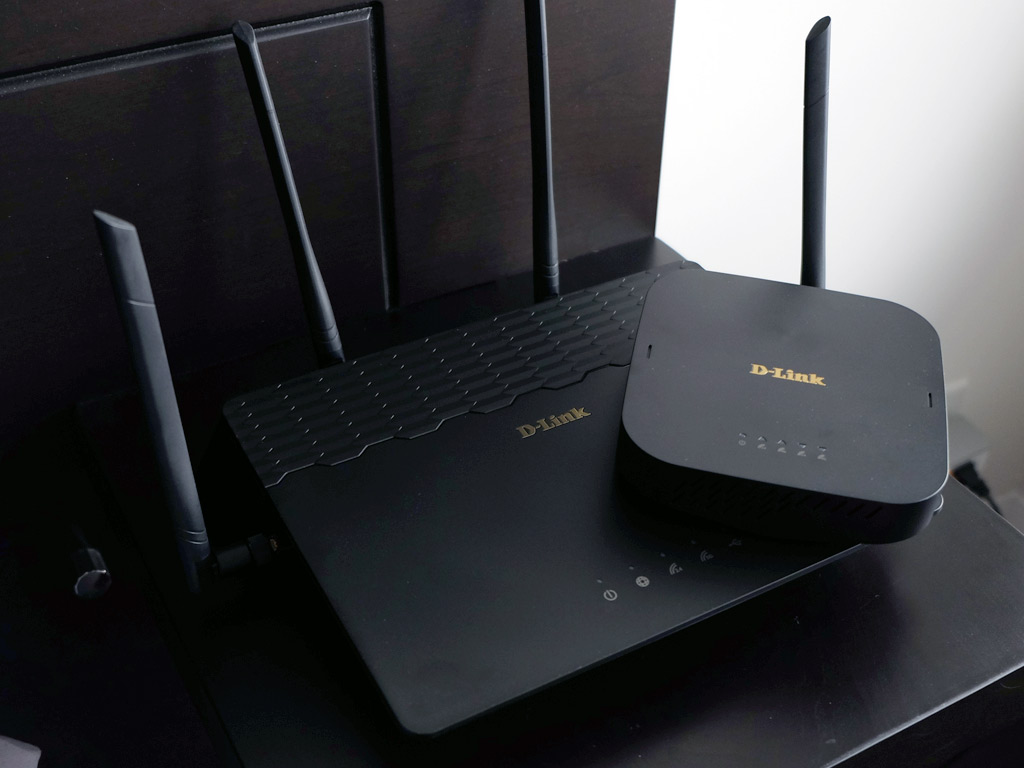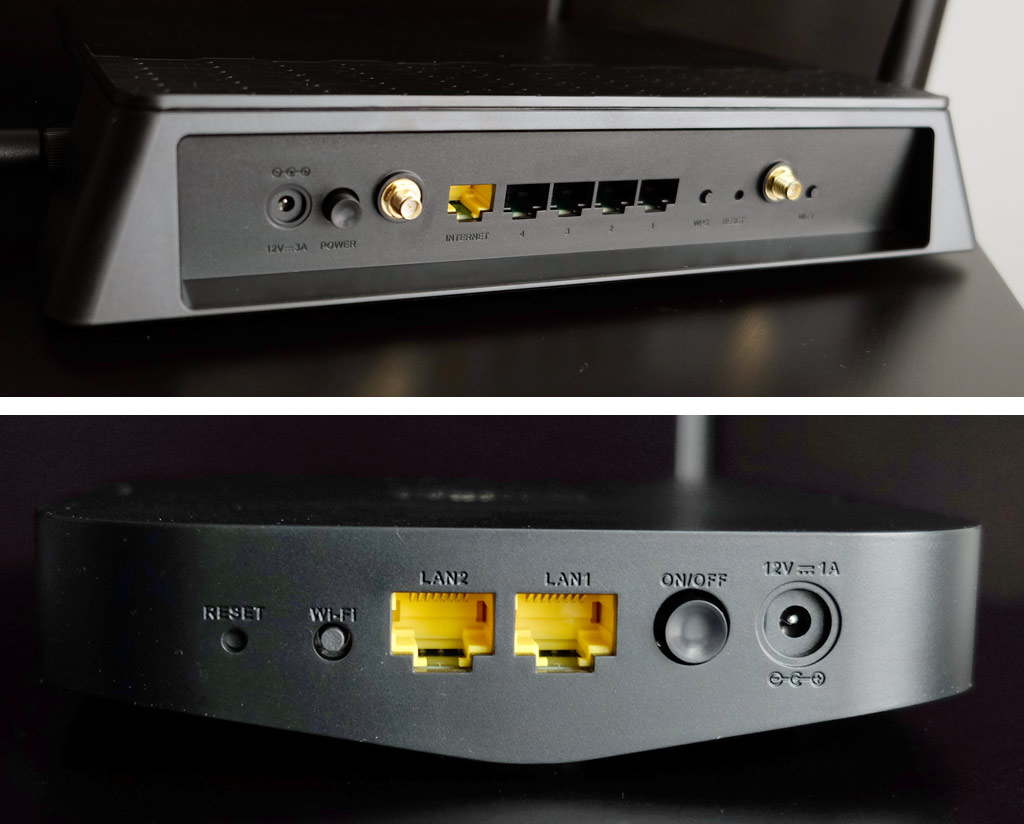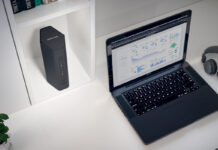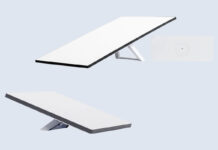Impro
Weak Wi-Fi signals or full-on dead zones are frustrating to deal with, and D-Link’s aptly named Covr system is designed to cast a wider net.
The D-Link Covr AC3900 is conceptually similar to other Wi-Fi mesh systems in that it’s designed to spread out the Internet connection through a wider area in the home. It does this by using a base unit that communicates with a satellite unit to extend that coverage.
The Covr differs from other mesh systems in that it doesn’t use identical hardware to create its own mesh. The main unit is a traditional router that looks every bit the part. If you were to see it on its own, you would never assume it was part of a mesh network. Indeed, unlike the relatively attractive and non-descript designs others have gone with, D-Link hasn’t done much to make the Covr a looker.
Establishing Covr
Going this route enabled D-Link to treat it like a typical router, putting a WAN port (in yellow) alongside four LAN ports for plugging in components via Ethernet. There’s even a USB 3.0 port at the front to plug in an external hard drive or printer for access across the network. Those looking to use an external drive for streaming media or backing up computers would be served well by the functional USB port, which is unusual for most mesh systems.
The satellite unit is essentially a range extender that doesn’t really work like one. Range extenders usually have their own SSID and password where there’s a handoff for devices to connect to it when in range. Being a mesh network, the Covr node extends the network as if it was a second router. Considerably smaller and easier to position anywhere in the home, it has some useful flexibility too.
There are two LAN ports on the back to plug in devices with Ethernet cables, in case you have a game console or hub for a smart home product nearby.

Together, these two cover up to 6,000 sq. ft. of space, making it useful for most homes. They are dual-band, though combine the 2.4GHz and 5GHz bands into one SSID. There is a workaround to separate them that I will touch on later. Maximum throughput combines the AC2600 (2600Mbps) of the main unit with the AC1300 (1300Mbps) of the node for a total of 3900Mbps. This is a purely theoretical number, and not one you are going to reach in practice.
They do support MU-MIMO (multi-user, multi-input, multi-output) for improved throughput with compatible devices. Options are otherwise limited beyond that, but not entirely different from other systems.
Setting up
As expected, the Covr was pretty easy to install and set up, having me up and running in about 15 minutes. Step-by-step guidance on the iOS and Android app made it simple throughout, except its usefulness on the management side is limited at best.
First, placing the node matters because it has to be relatively close enough to communicate with the main unit. It’s not hard to do, but since this isn’t a three-pack system like some others are, you may want to be strategic about where it goes.
Once the network is functioning, the app doesn’t dig very deep. You can get a broad picture of the network and basic controls, yet little else that is customizable. The web-based toolset does much more, including parental controls, filtering, device prioritization and other advanced options.
It’s also in the browser toolset that you can set up a guest network. I wasn’t able to separate the 2.4GHz and 5GHz bands into distinct SSIDs, so I set up a guest network exclusively on the 2.4GHz band and allowed for broader access to allow certain smart home devices I had to connect. It proved to be a solid workaround for devices that don’t work with 5GHz bands, and encountered no real issues, otherwise.
Parental controls are at your full discretion here as well. You can choose to schedule a set time to block access for a certain user or device, and filter out inappropriate sites.
Performance
The Covr has a knack for maintaining solid connections in closer proximity, but was less consistent from various distances during my testing. Some strange instances of dropped connections were also hard to explain, considering the LEDs on the Covr’s main unit and node never indicated there was an issue.
Aside from these unusual instances, which didn’t happen often, the overall connection was fine. Throughput depends on distance, however, explaining why consistency fluctuated. For example, I was able to get about 150Mbps transfer speed when copying a large 1GB file from a smartphone to a computer a good 25 feet away from the main unit. That’s not bad, but not necessarily as quick as some competitors. The node produces similar results, albeit with slower transfer speeds.
When using a device that has MU-MIMO, things noticeably improved. The advantage of that protocol is that it sends bandwidth without the receiving device having to wait for it in a queue. Improved speed from the same distance stood out. Not every device supports the protocol, but I point it out here because of the faster and smoother throughput.
Devices connected through the LAN ports are a different story, as they would be with any system. Some smart home products have hubs that need to be plugged into routers to communicate with the smart devices themselves. Smart lights are one example, but VoIP phones are another common one too.
I put the Covr node near a Sonos Play:5 and Nvidia Shield to plug them in in lieu of connecting them over Wi-Fi. Any device that connects via Ethernet will do.
The Covr can sustain up to another two nodes to extend the system an extra 3,000 sq. ft. total, in case you need to cover a wider area.
Final thoughts
I found the D-Link Covr to be a better option in a smaller space. While it can presumably spread up to 6,000 sq. ft., the reduced throughput at further distances nullifies some of that coverage. Single routers may usually be fine for condos or apartments, though a system like this can be great for pushing the signal out in older buildings where obstructions may be more evident. Bungalow houses may also work better, especially if the system is only meant for dwellers on one of the floors.
Expanding the Covr system is always an option, so it’s not like it can’t work in larger spaces. I’ve tested several mesh networks, and my experiences indicate three-pack systems tend to be better choices for mid-sized to larger homes. The Covr is a little less consistent, and was better when having to cover smaller spaces because of the improved throughput that would provide.
The D-Link Covr AC3900 Whole Home Wi-Fi system is available now.



